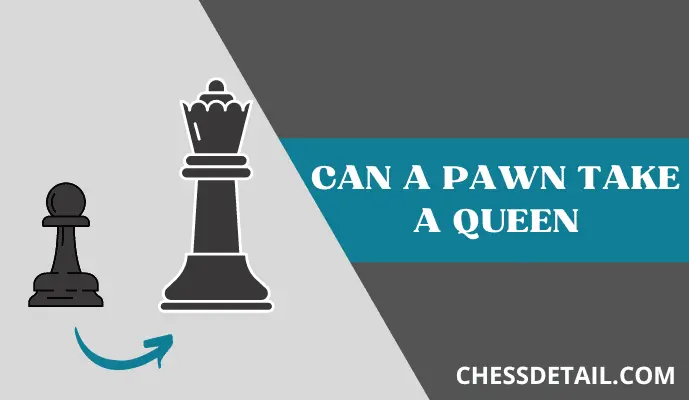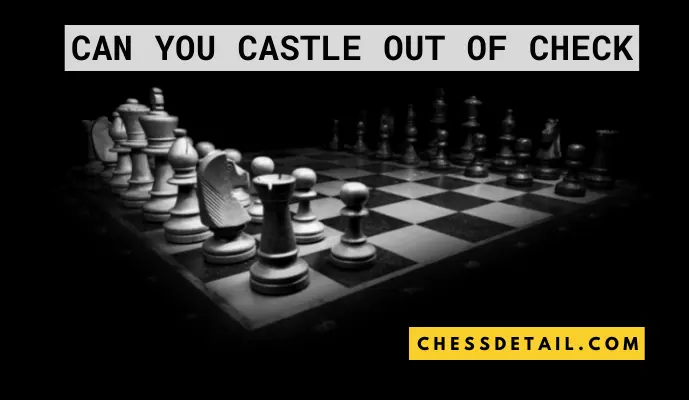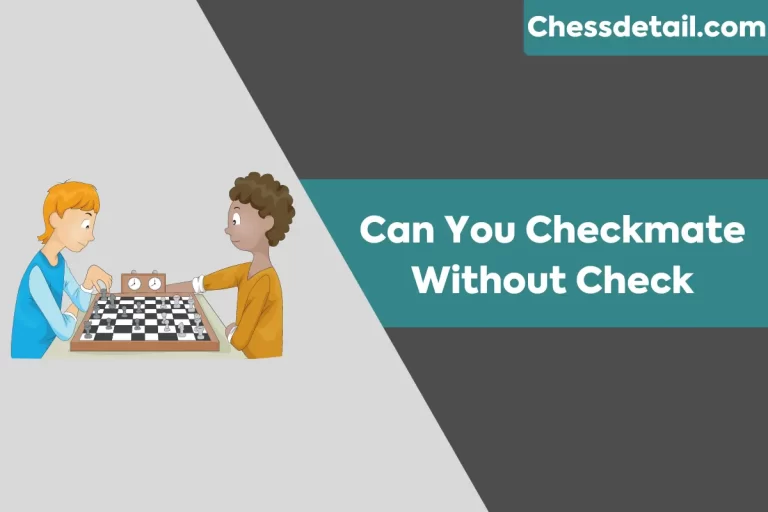How Does The Pawn Move In Chess [Everything Explained]
A pawn’s movements can be complicated, even though it looks like a simple chess piece. In order to win the game, you need to learn how the eight pawns work at the same time on the board. How does the pawn move in chess?
A pawn moves one step forward vertically according to the rules of chess. One or two steps may be taken by a pawn in its first move. Only diagonally forward steps can be taken by pawns for attacking.
Pawn promotion refers to the process of advancing a pawn to the opposite side of the board. It is possible to capture a chess piece even if the pawn cannot attack the opponent’s pawn because it has moved two squares. The en passant movement is what we refer to as this special move.
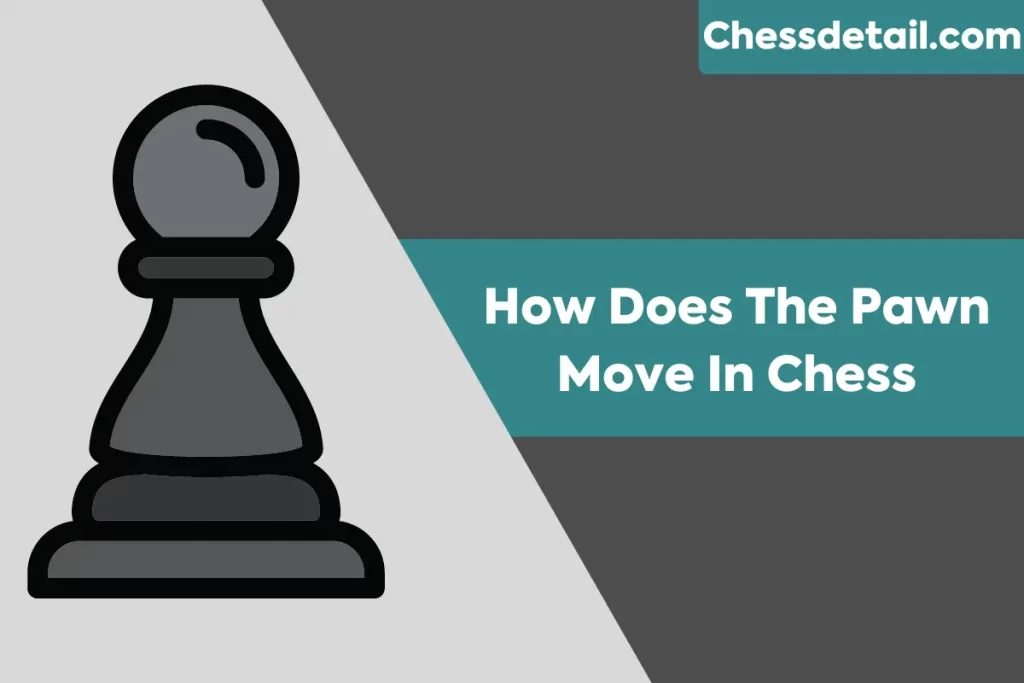
How Do Pawns Move In Chess?
In addition to their standard moves, pawns can also make two special moves according to the rules of chess. Moreover, no mention of capturing another piece is made. In no earlier variant has capturing been forced instead of moving been the rule.
According to the chess rules:
- There is no backward movement for a pawn
- The very first time a pawn moves, it may advance two squares along a file, but the rest of the time, it may advance only one square
- An unoccupied square must be available for pawns to jump over if they move two squares instead of one
- It is possible for a pawn to miss capturing a piece if it moves two squares instead of one
- When a pawn moves forward diagonally, to either side of the pawn to capture another piece, it moves one square forward
Pawn Promotion
Pawns can become any other piece if they successfully cross the board. The term “promotion” refers to this. In some cultures, only captured chess pieces can be exchanged for pawns. There is no truth to this.
Any piece in the game can be turned into a Pawn: Knight, Bishop, Rook, or Queen. Many players choose to change their Pawn into another Queen because it is obvious how valuable the Queen is.
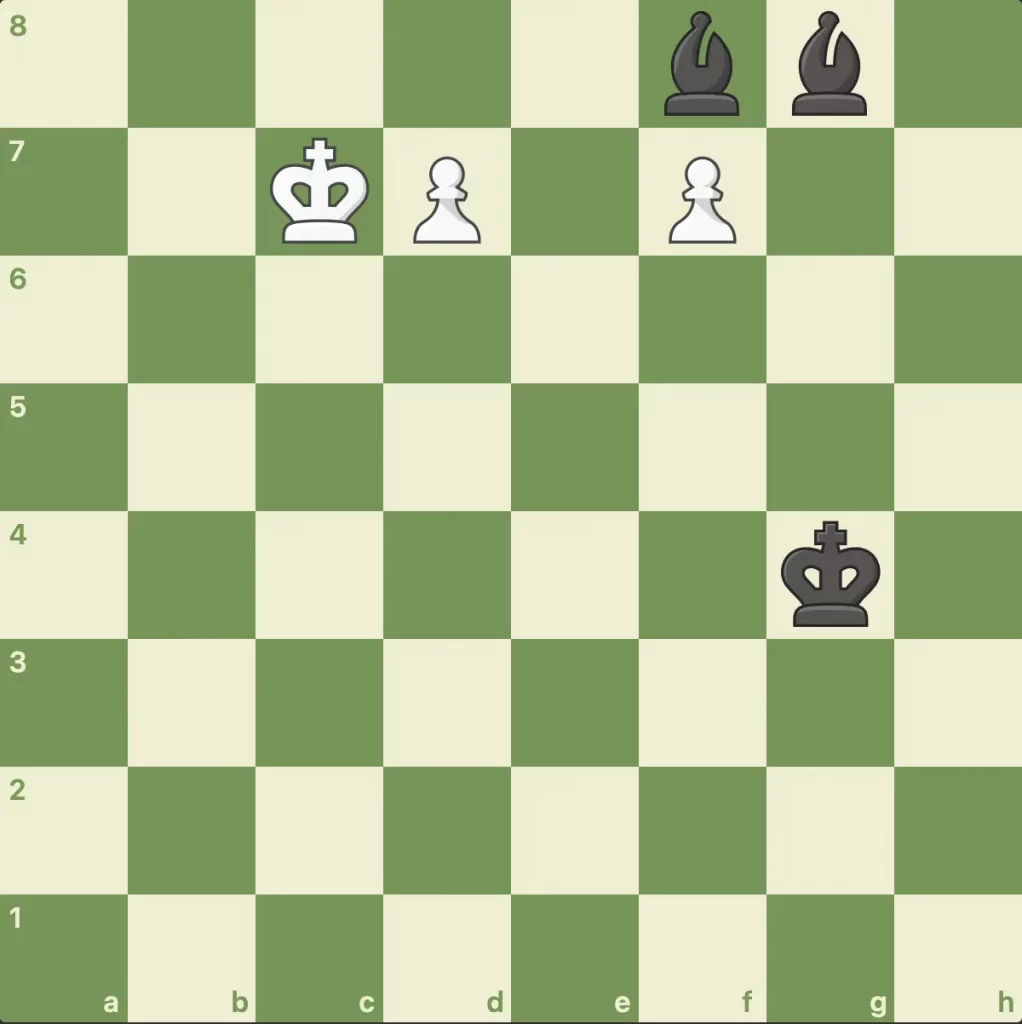
White can move his d7 Pawn to d8 in order to queen. Alternatively, White could capture the black Bishop on g8 in order to queen his Pawn on f7. You can win material by promoting your pawns. Your opponent’s pieces are taken, but you create your own!
You can also Read: Checkmate without Check and Chess Tournment Rules
En Passant: A Special Pawn Attack Move
Every rule has an exception. The ‘en passant’ move is an exception for the pawn. When pawns move forward two squares (after diagonally attacking a second pawn), it is extremely rare.
Taking all that it can be a bit overwhelming, so let’s step back a bit.
A pawn is en passant when it takes two steps toward its opponent. If your pawn hasn’t moved yet, it can move only two steps. In order for en passant to happen, the pawn moving next to your own needs to move horizontally:
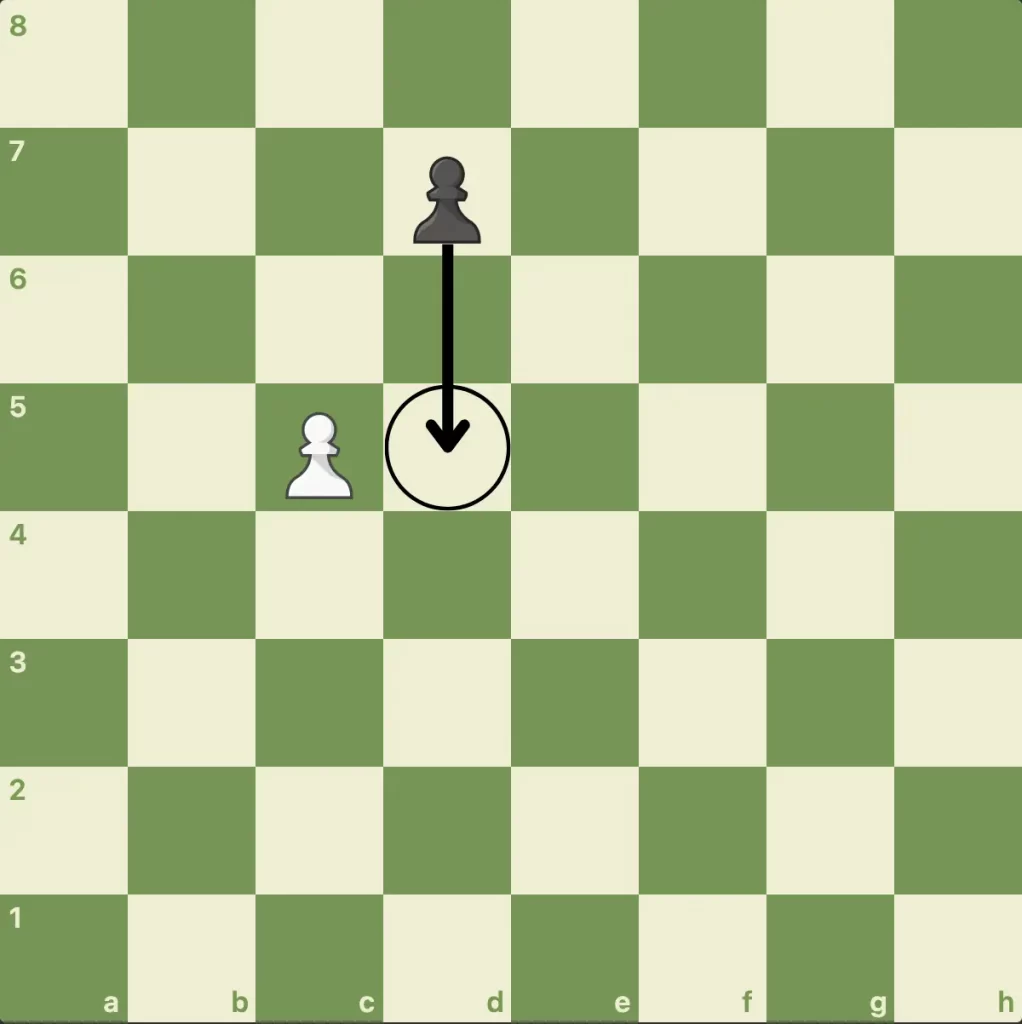
Two steps are taken by the opponent’s pawn in en passant.
Suddenly, something special happens with the opponent’s pawn after he takes two steps. Observe how pawn white was not able to capture or attack. What a pity! A pawn should be allowed to attack another pawn. This led to the addition of the en passant rule.
A pawn can attack through a fast-moving opponent’s pawn using an en passant maneuver in chess. A diagonal attack is made by the pawn as usual. On the other hand, your opponent’s pawn is not directly on one of your squares:
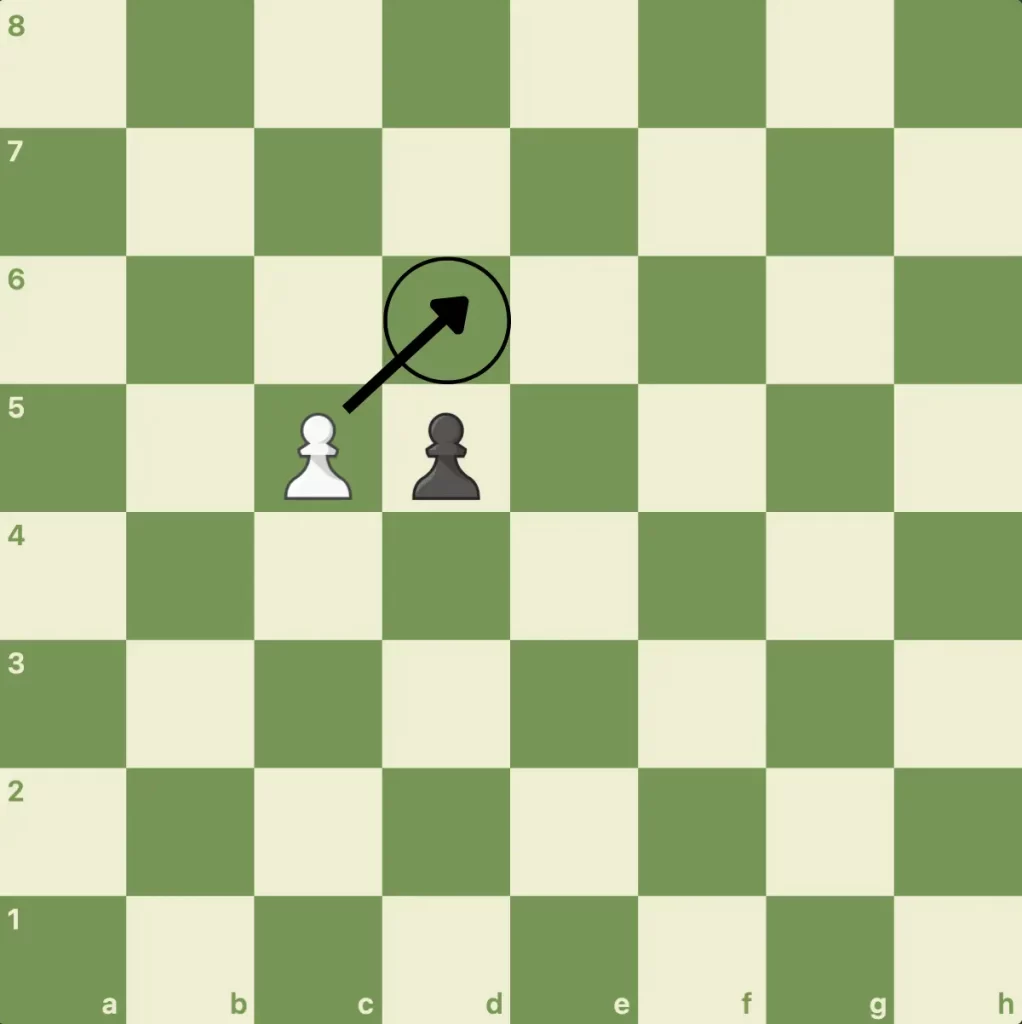
Taking advantage of fast-moving pawn, white pawn attacks!
Isn’t that a strange move? Several reasons make en passant an exceptional move:
- When the attacked piece is horizontal, a pawn can attack diagonally;
- Chess pieces can only land on other pieces’ squares when they are attacking en passant;
- Two squares are always moved forward by an opponent’s pawn;
- It is not possible to delay executing the en passant move until the opponent’s pawn has advanced two squares.
The special chess move is not forced unless there is no other available move left. However, if en passant attacks are as common as chess memes, this move should have been forced!
Pawn Chain
Pawn chains consist of blocking pawns that are connected, like those seen on d4 and e5 or d5 and e6. Both the head and the base of a pawn chain are present.
White’s chain is built on the pawn on d4, while black’s is built on the pawn on e6. Rams can be controlled by two levers each. …c5 and f6 are black’s options. C4 or F5 is White’s levers.
Attacking the opponent’s pawn chain’s base is usually the best strategy. It is common to see pawns moving backward when a lever is played against the front of a chain. (Playing c4 and receiving …dxc4 weakens the d4 pawn. Chains of pawns are a hallmark of the French Defense. A number of lines reach the structure shown here, including the advanced variation:
1.e4 e6 2.d4 d5 3.e5

The black pawn chain is under tremendous pressure from black.
3…c5! 4.c3 Nc6 5,Nf3 Qb6
The good idea is to play the f5 lever for white early in the game, but it is difficult to arrange. A strong d-pawn is being maintained by White. A piece on the Kingside may be used by white instead of a lever. It allows white pieces to move more freely because a pawn chain extends into black’s side. Even if it leaves a backward pawn on e6, the lever f6 can be good for black. In order for Black’s plan to succeed, he must play an active role.
Square Of A Pawn
It is possible to catch a pawn by looking at the square of a pawn. During the endgame, when pawns desperately attempt to move across the board to get promoted, this strategy works quite well. In order to visualize a square, we visualize its four sides, including the square on which the pawn stands and the square on which the queen is standing.
In this case, the King can prevent the pawn from becoming a queen safely if he gets inside the square. This method avoids using the usual “I go here, he goes there…” calculation. Rather, we can see what is going to happen through a visual
Note: Unmoved pawns are drawn from the third rank because of the double jump.
If White moves, Black moves, and the result is a tie
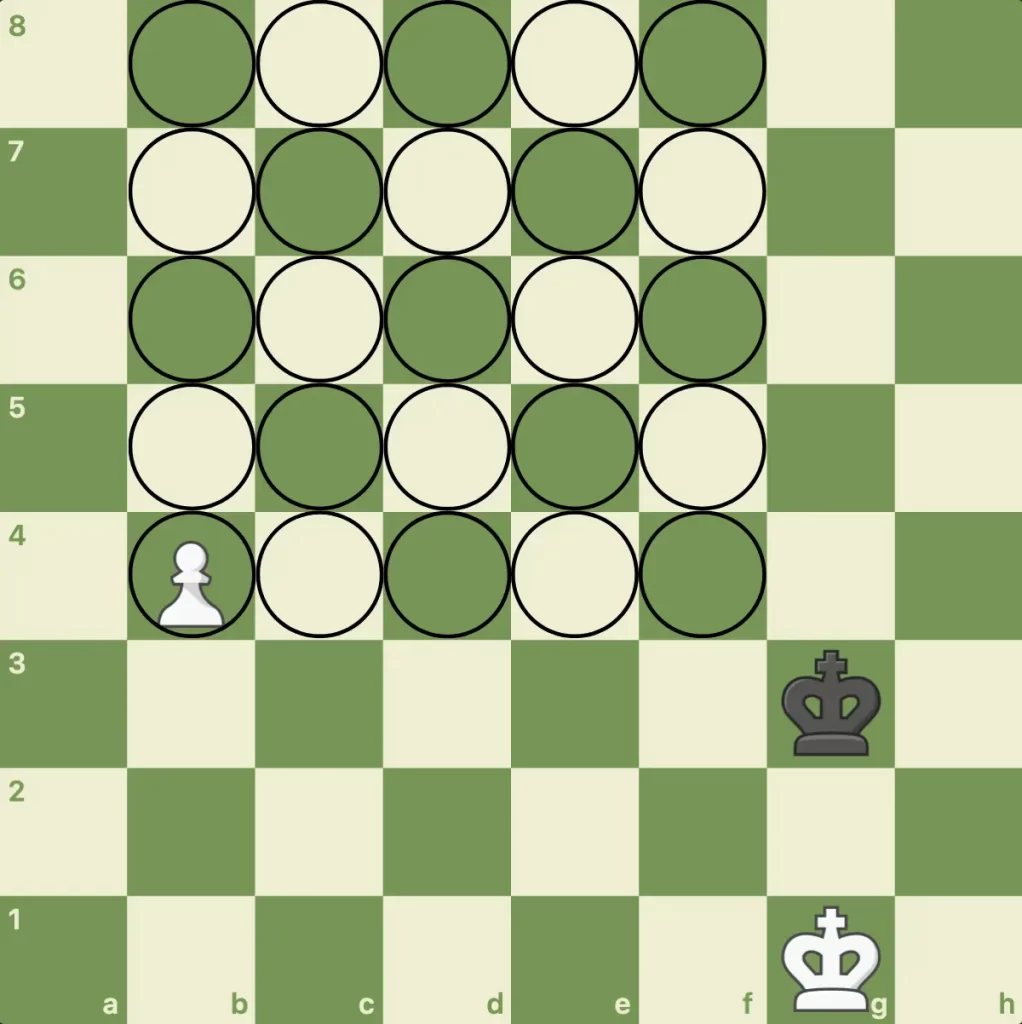
At what stages should I move my pawns?
Opening
When the game begins, you should move your pawns toward the center. Ideally, you want to place them on the e4, d4, e5, and d5 squares. In this way, the board can be controlled. The two central pawns should generally be moved two squares forward so your Bishop and Queen can have open lines.
The first move can be fianchetto of your bishop with pawns such as g3 and g6. You should also try to build a lever with your pawns to challenge the center.
Middlegame
Spacial advantage can be gained by moving pawns further up the board. Move forward slowly and attack the enemy’s weaknesses with your pawns once your King is safely tucked in.
You should attack your opponent’s position before his pieces regroup if his pieces are underdeveloped. As an example, if your opponent’s king is stuck in the middle, you can open the e-file with your pawn. You can create a disaster with your major pieces along that file.
It is sometimes a good idea to avoid overextending your pawns. Your pawns are exposed in the endgame if your attack fails.
Endgame
A pawn majority on either the kingside or kingside should give you a pawn advantage in the endgame. The passed pawn will potentially become a Queen as a result of this move. Whenever moving your pawns, be sure not to advance them without reason. There are times when they can become targets.
Pawn Movement Is Different From Attacking
Pawns can move quite complicatedly in common chess pieces, but they are easy to understand. It is apparent that learning the moves of 16 pawns is essential when playing chess. Understanding pawn movements and attacks are essential to playing well at chess.
From this overview, you should take away the following. When a pawn attacks diagonally, it moves vertically. Regardless of the circumstances, it always moves forward. In chess, pawns cannot move (or attack) backward. Keep this in mind!
Pawns try to reach the other side of the board by moving from one side to the other. A caterpillar can become a beautiful butterfly at that point. An extra queen can be created by converting a pawn into an extra queen. This is an impressive move.
Faqs [Frequently Asked Questions]
Question 1: When can a pawn move diagonally?
Answer: It is the only method they have of capturing and their only method of moving diagonally. The first pawn can declare an en passant capture when it has reached the fifth row, and an opposing pawn has moved two spaces in an adjacent column.
Question 2: Why do pawns take diagonally in Chess?
Answer: The warrior steps forward when he moves. They attack diagonally, though, because their hands must reach the sword before they are able to wield it diagonally. The warriors occupy the square once the attacks are complete. It seems that white would have an advantage in this situation.
Question 3: Can pawns move left and right?
Answer: The pawn moves and captures differently from all other pieces in chess. Only forward movement is possible for the Pawn. Neither sideways nor backward movement is possible. It is White’s responsibility to move the Pawn if White moves. The White player advances toward Black when Black moves.
Question 4: Can a pawn move diagonally without attacking?
Answer: If a pawn captures a piece on the final rank, it can move diagonally to promote. Pawns cannot move diagonally even to gain promotion if they are not capturing an opponent’s piece.
Question 5: When a pawn reaches the other side, what happens?
Answer: Suppose, however, that the pawn reaches the other side? Pawns have the ability to promote to another piece if they reach the opposite side of the chessboard. It can turn into a Queen, Bishop, Rook, or Knight. By promoting a piece, you are allowed to have an unlimited number of pieces of
that type.
Final Words
If you found this overview helpful in understanding pawn movement, could you please let me know? In the discussion section below, please feel free to ask any other questions you might have regarding How The Pawn Move In Chess or Chess game. Every question will be answered as soon as possible. I look forward to talking with you there!

